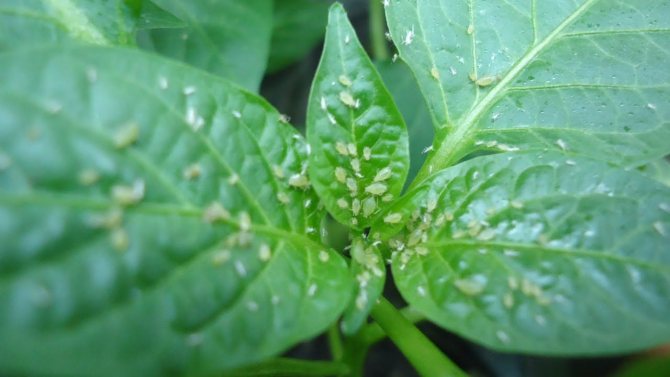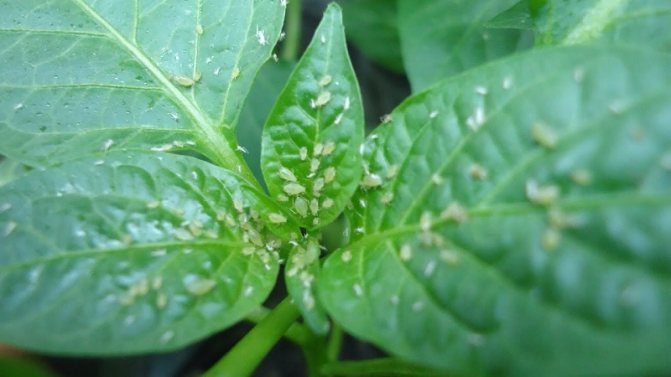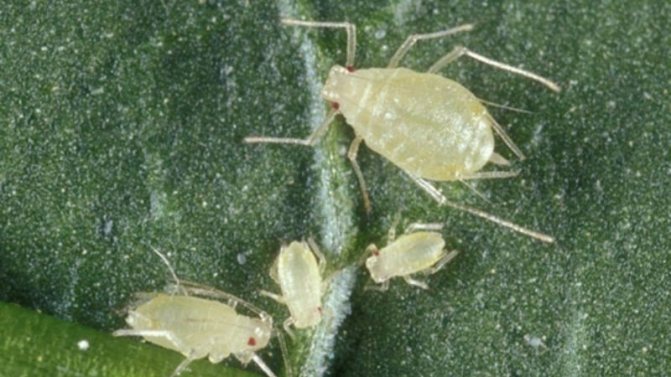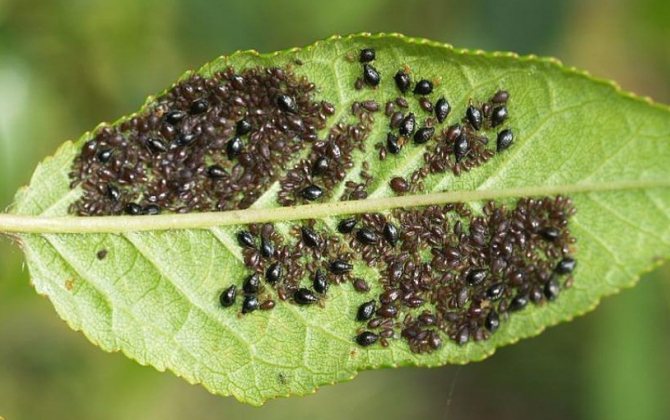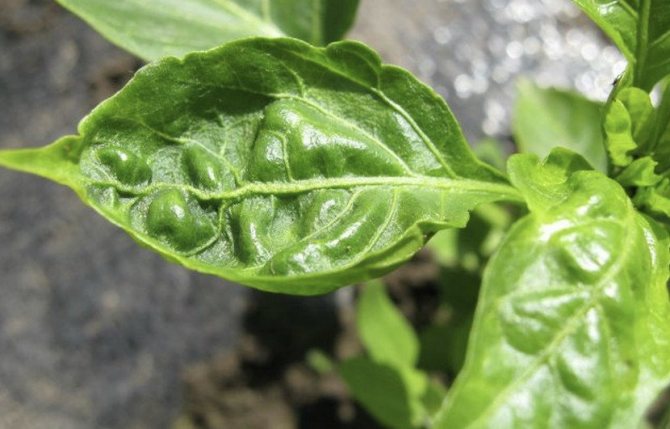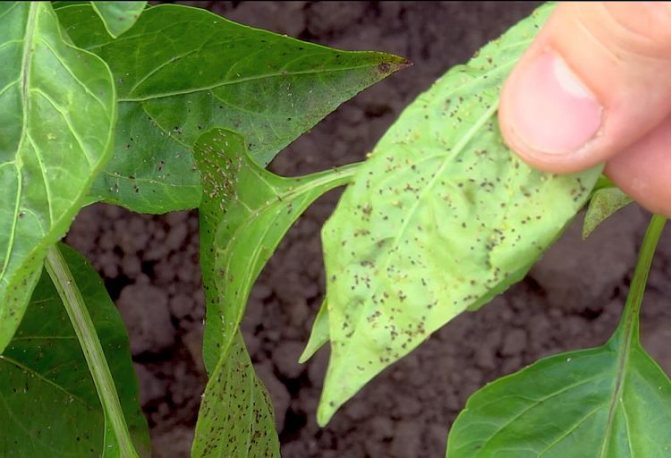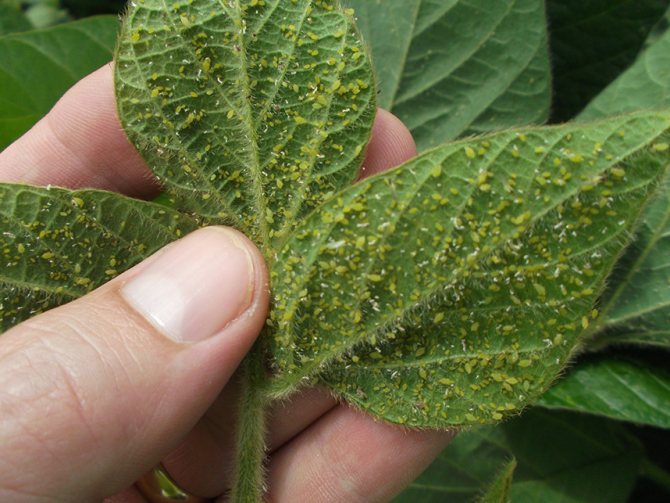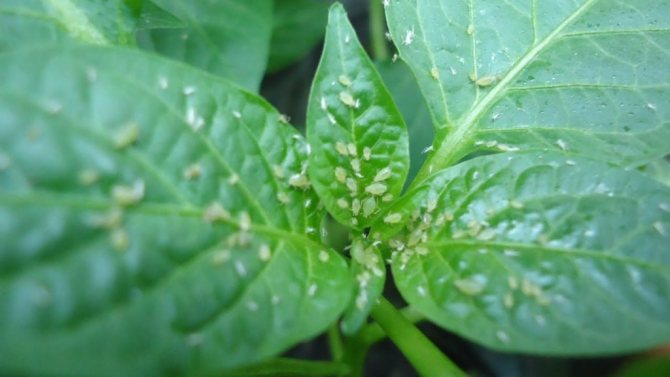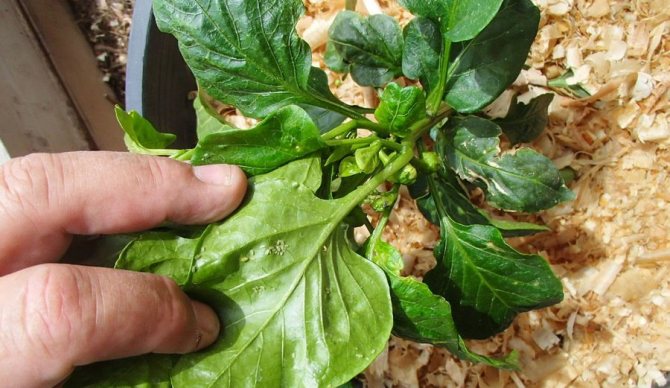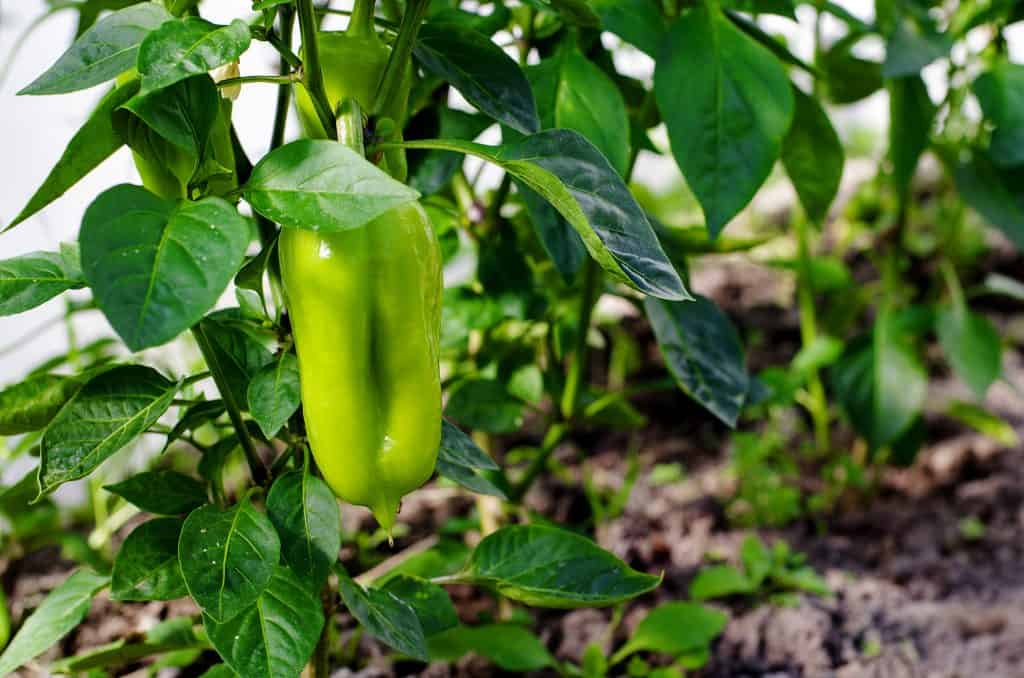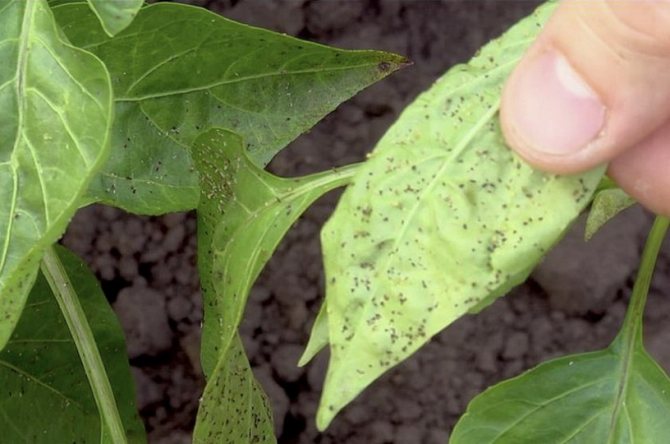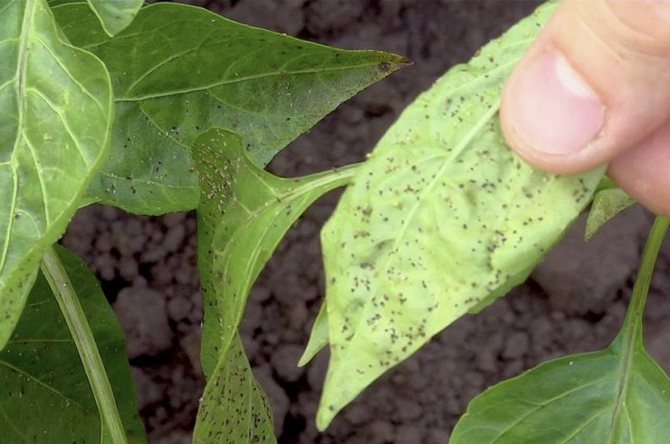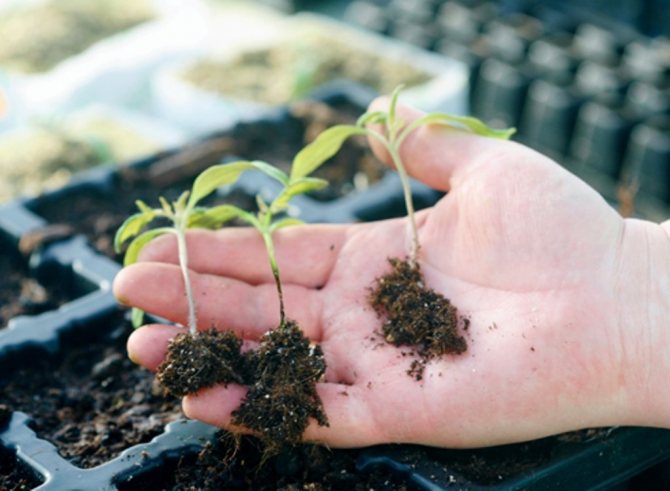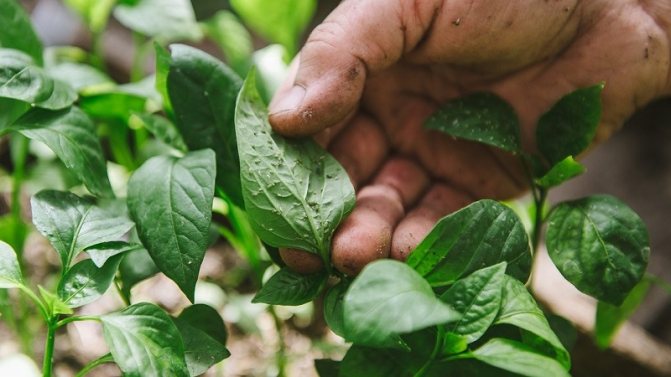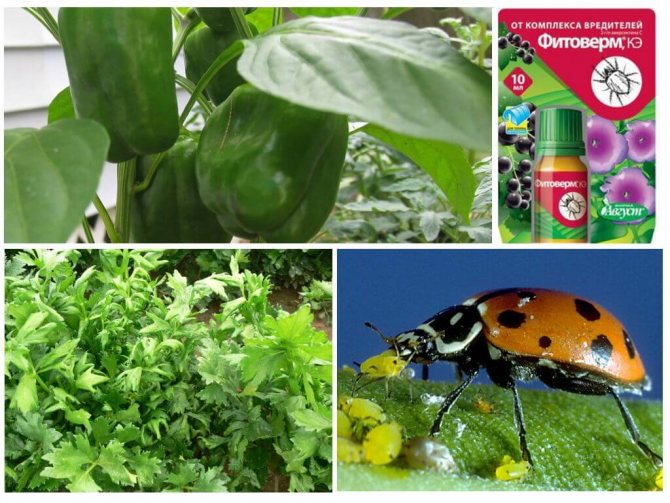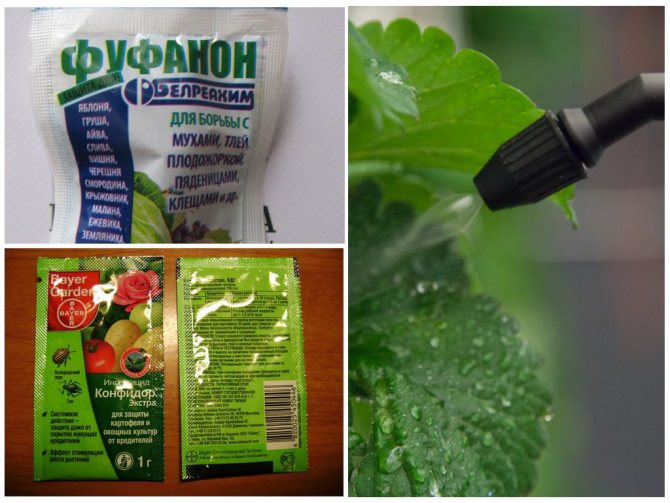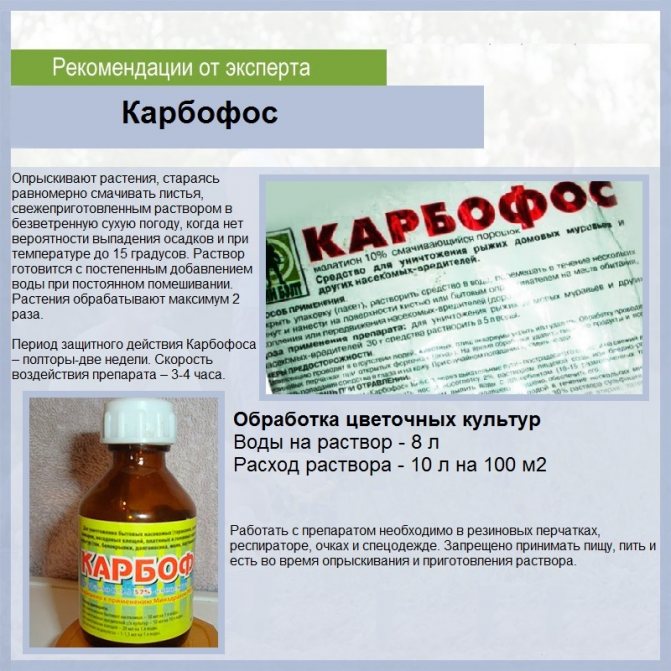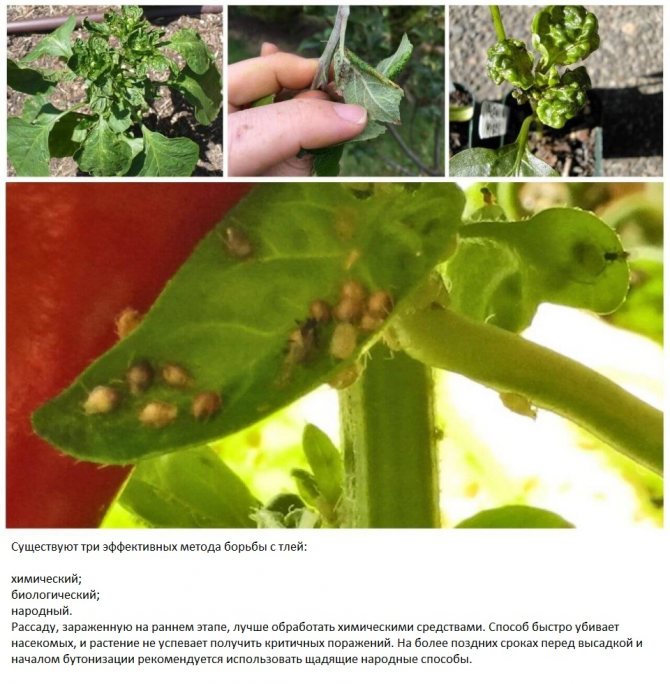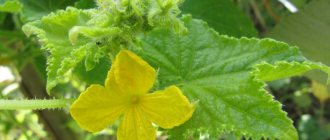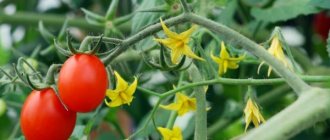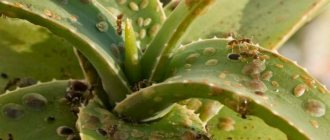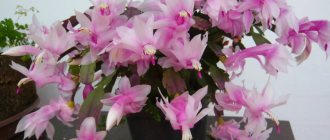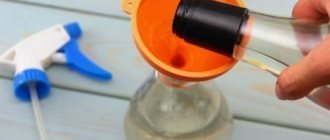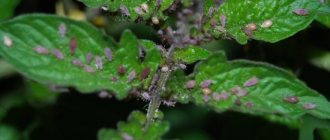Ticks, worms or aphids on pepper seedlings are a gardener's nightmare. Vegetables sown in winter usually grow in an apartment on windowsills, under which batteries are a source of hot dry air. It is this microclimate that pests of pepper seedlings love.
And if we take into account that at home, in addition to bell pepper, half of the garden grows at the same time - tomatoes, eggplants, ornamental crops - then the parasites have a place to roam. Not noticing the pests in time, the gardener runs the risk of being left without seedlings at all. Ticks and insects wander from culture to culture, destroy delicate greens, sucking out life-giving juices, gnawing leaves.
Where do insects come from at home? How to prevent an attack? What are the means to get rid of aphids and other pests on pepper seedlings? We invite the reader to sort out the problem together in order to prevent the appearance of all kinds of midges and fleas on the plants, in which we invest so much work and hopes.
Description

Aphids are a small insect belonging to the order of the Homoptera. The parasite uses plant sap for nutrition, sucking it out of leaves, non-lignified stems, flowers and ovaries. There are more than 3500 species of aphids in nature. Of these, about 1000 live in European countries. Insects live in numerous colonies, multiply and spread rapidly.
On average, the size of adults is 2 to 3 mm. But some species reach up to 7 mm in length. They have an oval body with a sucking mouthpiece at one end. The insect pierces the shell of leaves and stems with the help of a proboscis. The pest uses 3 pairs of limbs to move. Adults come with or without wings. You can see aphids in more detail in the photo. Winged insects migrate, flying in search of food from one plant to another.
Of all the known varieties of aphids, the following appear on bell peppers:
- Peach does not exceed 2 mm in length. Usually her body is colored translucent green, but sometimes red individuals are found.
- Greenhouse predominantly affects plants of greenhouse or greenhouse soil. Adults reach a length of 3.6 mm. Their body is green in color, sometimes a strip of a darker shade runs along the back.
- The nightshade or black aphid is the smallest. The body size of an adult does not exceed 1 mm. The color is different, but black insects appear more often on bell peppers.
Aphids reproduce at a high rate. An adult female reproduces 3 generations in a month. At the same time, she makes up to 150 eggs in one clutch. The larvae hatched from them turn into sexually mature individuals in just 7 days. During the summer, aphids reproduce asexually. Most often, wingless individuals are born, but sometimes winged ones come across among them. They fly to healthy plants and infect them. With the onset of autumn, sexual reproduction of aphids begins. Then the laid eggs are stored until spring.
On a note!
Aphids reproduce most rapidly at temperatures from + 25 ° C to + 30 ° C. When the temperature drops to + 20 ° С, reproduction slows down by half. Then insects develop more slowly, reaching sexual maturity in 2 weeks.
What is aphid, its types
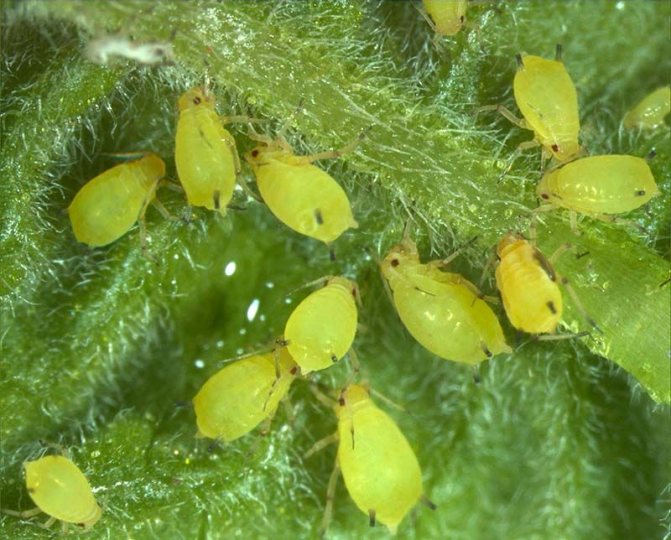

Aphids are small flying insects with a body length of 2-3 mm. The pest has a proboscis.It is designed to suck out juices from plants. In addition to the fact that aphids feed on vegetation, they carry many infections: phytophthora, powdery mildew and other dangerous diseases. In color, the body of aphids can be transparent, black, red, it depends on the specific species. Peppers most commonly attack the following:
- peach. The insect has an oval body up to 2 mm long, green or red. The pest settles on the back of the leaves, multiplies quickly in favorable conditions;
- greenhouse. This view is easier to notice, since the length of the little body already reaches 3.5 mm. The color is green. Greenhouse aphids love warmth, therefore they live in hotbeds and greenhouses;
- nightshade. It is considered the largest representative: the body is 4 cm long. The color is light green.
Reproduction occurs very quickly: one female at a time makes a clutch of 100-120 eggs, so the colonies grow several times in a few days, affecting more and more plants. The pest actively attacks the pepper, since the fruits of the culture contain a lot of juice. The insect, as a result of the attack, secretes honeydew, and this is a favorite delicacy of other insects - ants.
Attention!
Aphids overwinter in last year's fall foliage and other garden debris. If last year the insect has already damaged the plantings, then the seedlings should not be planted in the same place, since there is a high probability of re-infection.
Causes of the appearance of aphids
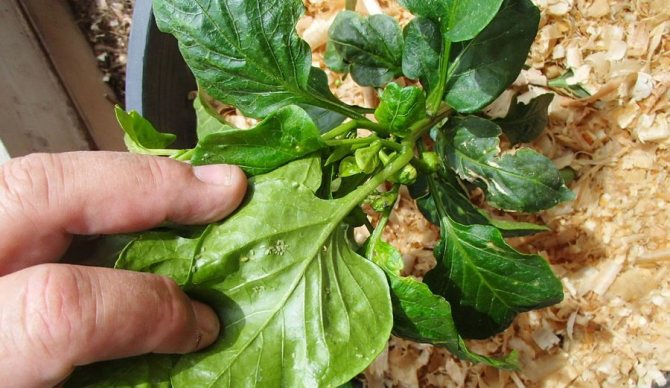

In winter, the pest hides in the soil or uses last year's foliage as a refuge. Egg clutches are preserved under the bark of trees. Therefore, one of the reasons for the appearance of aphids on peppers in a greenhouse or in open beds is the re-planting of plants in areas where there were previously cases of infection with this pest. Ants help spread the parasite. They help the wingless aphids to move from one plant to another, receiving in return sweet milk - honeydew. Thanks to symbiosis, both types of insects get what they need. Ants are food, and aphids are a constant expansion of their range.
If aphids appear on pepper seedlings or adult plants, the following reasons are possible:
- high air temperature, especially at night;
- high soil moisture in the upper layer;
- using contaminated or poorly disinfected soil for growing seedlings or planting in a permanent place;
- infection of plants with adult insects from neighboring beds or plots;
- sowing infected seeds;
- an abundance of weeds on the site;
- the presence of an anthill nearby.
What insects infect a crop?
Peppers are attacked by various types of aphids. Usually this:
- peach;
- nightshade;
- greenhouse.
Photos and descriptions of various varieties of aphids can be seen here.
Most often, the peach aphid is found, which is not very selective in cultures. It also feeds on melons, cucumbers, cabbage, salads, and some flowers. However, pepper loves most of all.
Read about the appearance of aphids on cucumbers and the fight against insects in this material.
Peach aphid consumes plant juice, settling down the lower parts of leaves and stems. If the number of insects increases, it settles on the inner and outer surfaces of the leaves. This causes curling and puckering.
The number of aphids directly depends on the temperature and humidity. For aphids, the optimal conditions are a temperature within + 25 ° and a humidity level in the region of 70-90%. Aphids live 5-30 days and begin to reproduce a week after birth.
Aphid harm
Aphids in pepper are attracted to young shoots and leaves. They contain a lot of nutrient-rich juice. Insects use it for nutrition, disrupting the cellular structure of plants. As a result, the development of the bush slows down. With the further spread of insects, growth stops altogether.
The honeydew secreted by aphids has a harmful effect on plants. Milk is the processed excess juice sucked from the leaves and stems. In small quantities, these secretions are not harmful to plants. If a sticky liquid covers most of the leaf, dust accumulates on it. It makes it difficult for the sun's rays to penetrate into plant tissues and interferes with the normal implementation of photosynthesis. Due to the large amount of sweetness in the honeydew, a sooty fungus multiplies on it.
Aphid saliva contains toxins that damage plant tissues. In addition to them, viruses are present in the secretions of the insect that are transmitted from diseased plants to healthy ones. Then not only plants of one species suffer, but also others that are nearby.
How to identify the problem - signs and symptoms of damage to pepper seedlings
You can identify problems at an early stage of occurrence by the following signs:
- the seedlings turn yellow, while the leaves curl, dry out and eventually fall off;
- the absence of ovaries, and if they are formed, then the buds do not open, but quickly fall off;
- the presence of a viscous, sticky liquid on the culture;
- at the bottom of the pepper, with the naked eye, you can find the larvae of the parasite and the clutch of eggs;
- deformation of young shoots, which leads to a halt in the development and growth of the bush.
It is important to identify aphids in a timely manner. This will help you take appropriate action and preserve the pepper seedlings. Ignoring the parasite leads to the death of all bushes and the spread of the pest to other crops.
Signs of infection
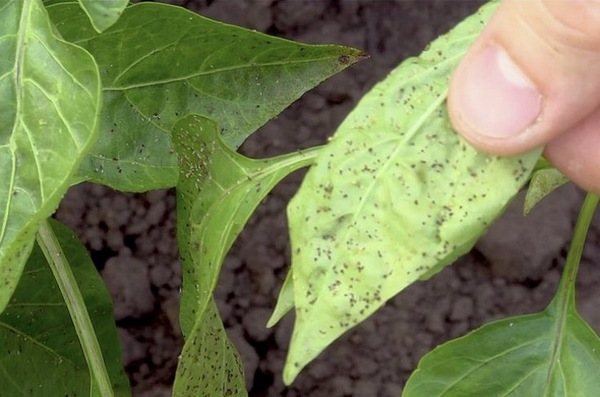

With a large number of insects, it is easy to see them with the naked eye on young stems or on the back of leaf plates. If there are few individuals, the affected bushes can be recognized by wilting leaves or shriveled shoots in the upper part. Such deformation of plants develops due to a lack of nutrients.
Important!
The main symptom of the defeat of pepper bushes by aphids is considered to be pad. It is a sticky white coating that covers the underside of leaves and shoots.
Other signs of aphid infestation include:
- curling and wilting of leaves;
- lack of ovaries;
- falling of unblown buds;
- colonies of parasites and egg clutches on the back of the leaves;
- lag in the development of the infected plant and growth arrest.
We recognize the enemy by sight
The sooner you find uninvited guests, the easier it is to deal with them.


Signs of the presence of parasites:
- tubercles on leaf plates;
- black dots;
- dandruff-like dust;
- spots - yellow, brown, white strokes, holes;
- a shiny coating that is sticky to the touch;
- pimpled surface of leaves or plaque on the trunk.
And if holes are noticed on the sheets, deformation (the plates are twisted), they urgently begin to fight for seedlings. Tiny insects, invisible to the naked eye during a cursory examination, quickly eat tender young leaves, gnaw at buds and petioles, leaving no chance to save crops.
Aphid
Of the thousands of species, sweet peppers are threatened by three representatives of sap-sucking insects. An ordinary gardener does not need to know the types and subspecies. It is more important to remember that aphids:
- is able to completely destroy young growth;
- breeds so rapidly that during the season one female is the source of more than one thousand young individuals, for which two weeks are enough to reach maturity;
- piercing the tissue of the leaf, it brings in dangerous infections with saliva - it will be necessary to save the seedlings from viral diseases;
- the accumulation of the sweet secretion that insects secrete not only blocks the respiration of the leaf: the sticky place is a favorable environment for the development of a sooty fungus.
Treatment of a neglected plant, weakened by the triple blow of aphids, is often useless. While the gardener does not notice the threat, the colony captures bush after bush, spreading secondary infections.
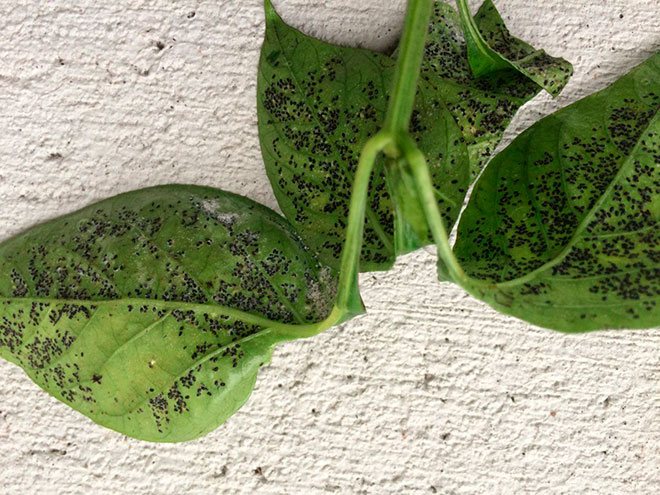

Ways to get rid of aphids on peppers
To combat the pest, different methods are used: destruction with chemicals, safe processing of plants using folk methods, or the use of modern highly effective biological agents. How to deal with aphids on pepper seedlings is decided depending on the place where the seedlings are grown. Most vegetable growers plant seeds at home. Chemical insecticides are not advisable to use in an apartment because of their toxicity. Therefore, the fight against aphids on pepper seedlings is carried out using safe folk methods.
Pest control methods
Aphids are a serious enemy of sweet pepper. What should a gardener do when faced with this problem? There are three methods of dealing with aphidids:
- chemical - quickly gets rid of aphids (cannot be used during flowering plants);
- biological - the natural properties of some species of plants, birds, animals and insects are used to protect plantings from aphidids;
- folk - recipes for getting rid of parasites, which were tested by summer residents on their own experience.


Biological way
When growing peppers in the open field, it is advisable to lure the enemies of aphids... One week is enough for birds and insects to rid the entire area of it without harming the seedlings. The birds will destroy pests on the site if you create comfortable conditions for them. To attract sparrows and tits to the site, leave them food.
The seven-spotted ladybug larva destroys one hundred adult harmful beetles and up to three hundred larvae in one day... The riders aphelinus and aphidius are the main enemies of the aphids. They lay eggs in the body of aphidids. They feed on aphids and ground beetles, lacewings, earwigs and some species of spiders.
Protect beneficial insects, bring the seven-spot ladybugs, aphelinuses and aphidius to the beds. It is easy to attract riders and hoverflies if you plant herbs in the beds with pepper. First, it is better to study the photos of insects so as not to confuse and not bring pests to the site.
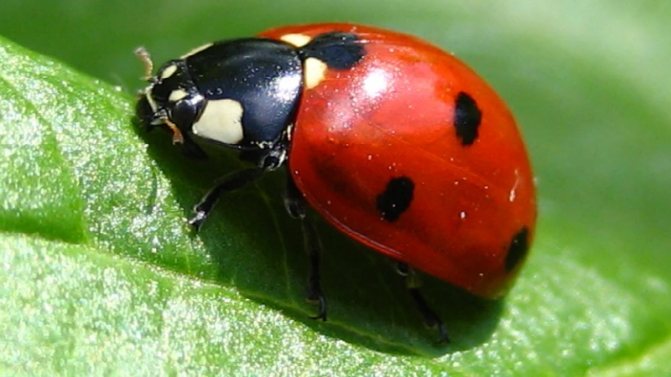

In addition to birds and insects, nature has created plants that are able to fight harmful insects: Dalmatian chamomile, onion, garlic. Plant these plants next to peppers to keep aphids away.
Attention! Mallow, begonia, viburnum attract aphidids. Plant these plants away from pepper beds and the parasites will switch to them.
The smell of some spices - carrot tops, dill, parsley - also repels harmful insects.
Chemicals
To combat aphids, insecticidal and organic chemicals are produced... How to treat pepper from aphids during fruiting? In this case, the owners of summer cottages use biological preparations for pest control. Their main advantages are that they do not harm the microflora of the soil, and the harvest of peppers can be eaten within 24 hours after processing the plants.
Attention! Chemicals for plant pest control are toxic and hazardous to humans and animals.
Biological means:
- "Akarin"... The treatment of a 10 m² garden bed will require 1 liter of solution. The effectiveness of the product decreases at temperatures below + 18 ° C.
- Fitoverm M used to combat fungal diseases of plants. The drug is produced in the form of a paste and ampoules. One ampoule is diluted into 4 liters of solution. It only affects adults that die 72 hours after treatment. This drug does not work on larvae. The processing is repeated 3-4 times.
Insecticides work quickly and effectively... Their main advantage is the destruction of parasites in one go. The most effective insecticides contain neonicotinoids and pyrethroids.
Important! During flowering, insecticidal preparations are not used.
Consider the most popular of insecticides:
- With the drug "Intavir" plants are treated in dry weather twice with an interval of 7 days. The drug is available in the form of tablets. The solution is made at the rate of 1 tablet per bucket of water.This amount is sufficient for processing crops with an area of 10 m². The protection is valid for 2-4 weeks.
- "Karbofos" - contact insecticide. Only those pests that get the solution die. Processing is carried out 2 times with an interval of 10 days. The effect of the insecticide lasts 8-10 days. The solution is prepared at the rate of 1 tbsp. l. "Karbofos" for 10 liters of water.
- "Aktara" - a drug of contact and intestinal action. The main advantages of this insecticide are that it does not decompose and does not accumulate in the soil, does not cause an addictive effect in insects. The product is produced in the form of 5 ml ampoules. 1 ampoule is diluted in 10 liters of water. Processing is carried out twice at weekly intervals. The drug begins to work in 30 minutes.
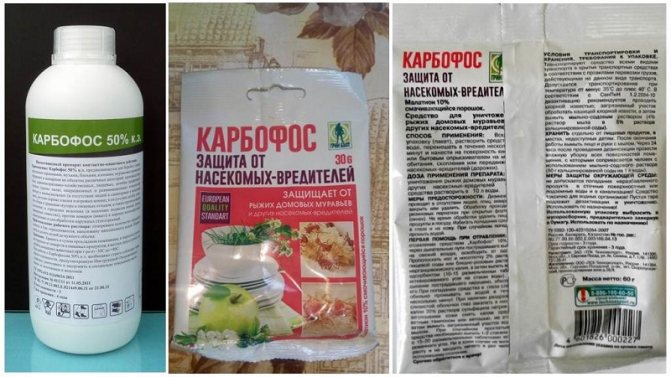

Folk remedies
Folk remedies are safe for humans, but to a greater extent they prevent the attack of aphids. Experienced summer residents are advised to fight aphids using soda, ammonia or hydrogen peroxide:
- hydrogen peroxide - mix 50 ml of hydroperite, 2 tbsp. l. medical alcohol, 0.5 tsp. liquid soap and 900 ml of water, spray the plants;
- ammonia - prepare a solution at the rate of 20 ml of ammonia per 10 liters of water, spray it on the plants (ammonia repels pests with a smell);
- baking soda - make a solution at the rate of 1 tbsp. l. grated laundry soap and 2 tbsp. l. soda in 1 liter of water, spray pepper bushes.
Folk remedies
Here you can describe a lot of self-prepared means - infusions, decoctions, milkshakes. Moreover, most of them will contain such a component as a soap solution. Rather, it will just be the key binder - the main thing is to properly prepare a soap base, to which ash, ammonia, sunflower oil, etc. can then be added.
A soap solution is prepared as follows:
- grate 4-5 grams of laundry soap;
- combine the grated soap shavings with 1 liter of water;
- mix and shake the composition;
- leave alone for 5 hours;
- strain;
- add an auxiliary component;
- pour into the sprayer;
- process pepper plants.
Biocontrol
The "technology" is very simple - you need to try to lure as many insect enemies of aphids as possible, as well as birds whose nutritious diet involves eating the pest. Moreover, there is no need for anything special. The usual tits and sparrows, hover flies and ladybugs, certain species of wasps, etc. will do an excellent job with aphids. It takes very little for them to appear on the site - to provide tasty food and water, well, and the aphids will go as a snack.
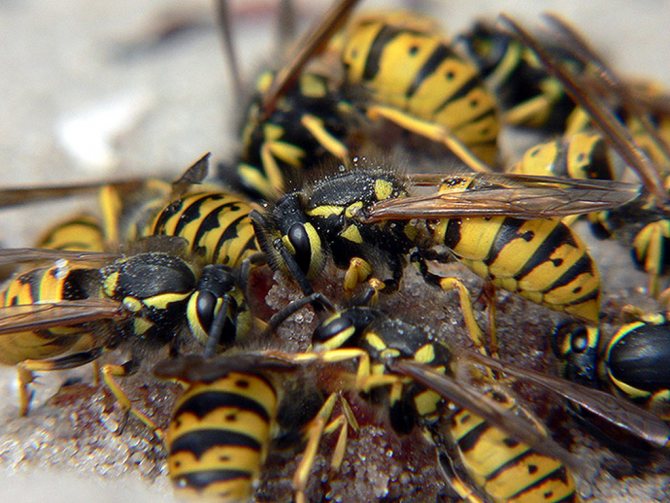

Some wasps feed on aphids
Attention! Birds and spider bugs should be helped - aphids can and should be collected manually and then physically destroyed. Another commonly used method is rinsing with a stream of water. In this case, the water should be as cold as possible. In this case, the insects will instantly be immobilized, which means they will easily wash off to the ground, where they will die without a power source.
How to find out about aphid infestation in a timely manner?
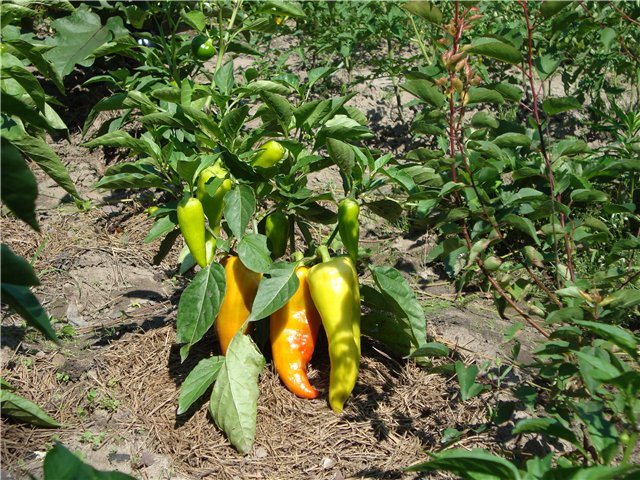

Examine the pepper - perhaps the pest is already preparing to destroy the crop
- Leaves curl and dry.
- The appearance on the surface of the trunk and leaves of a syrupy pad.
- Plants become sticky and shiny.
- Small insects crawl from the inside of the leaf, and egg clutches are also found.

